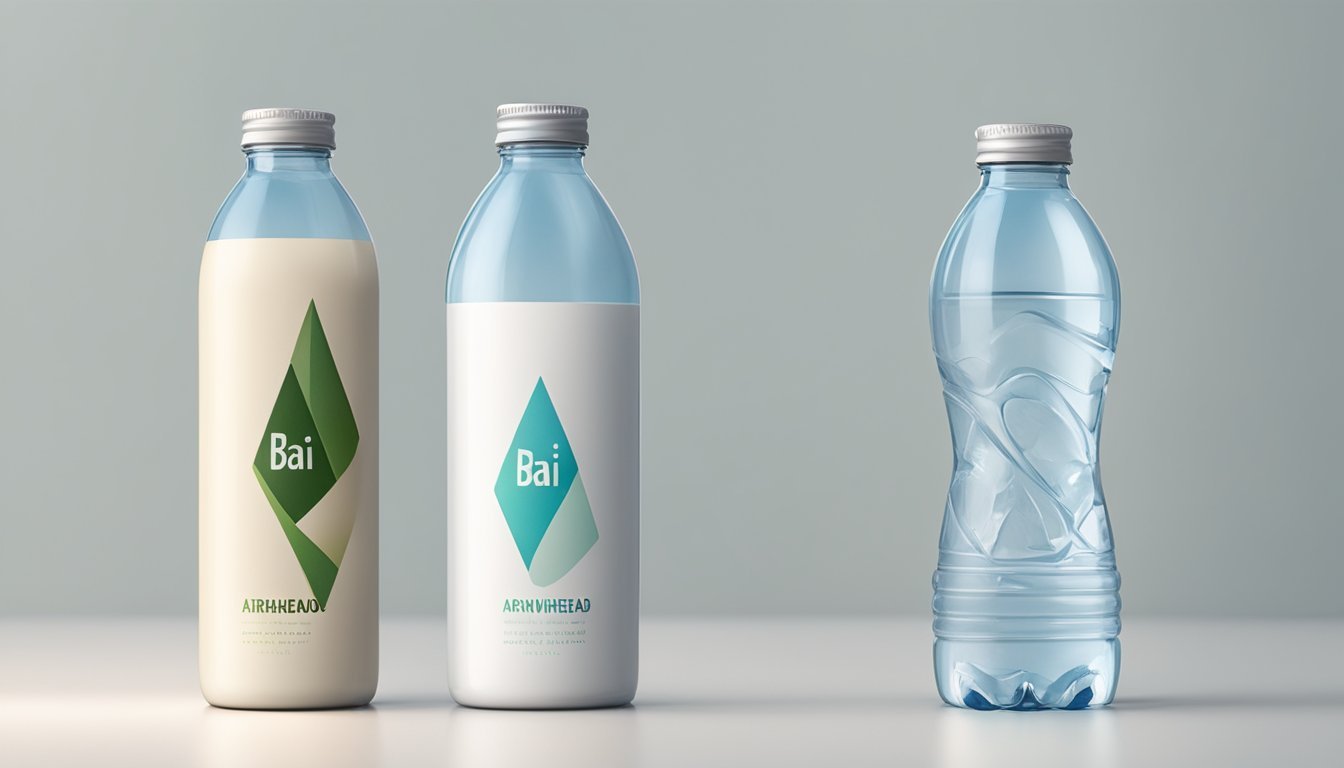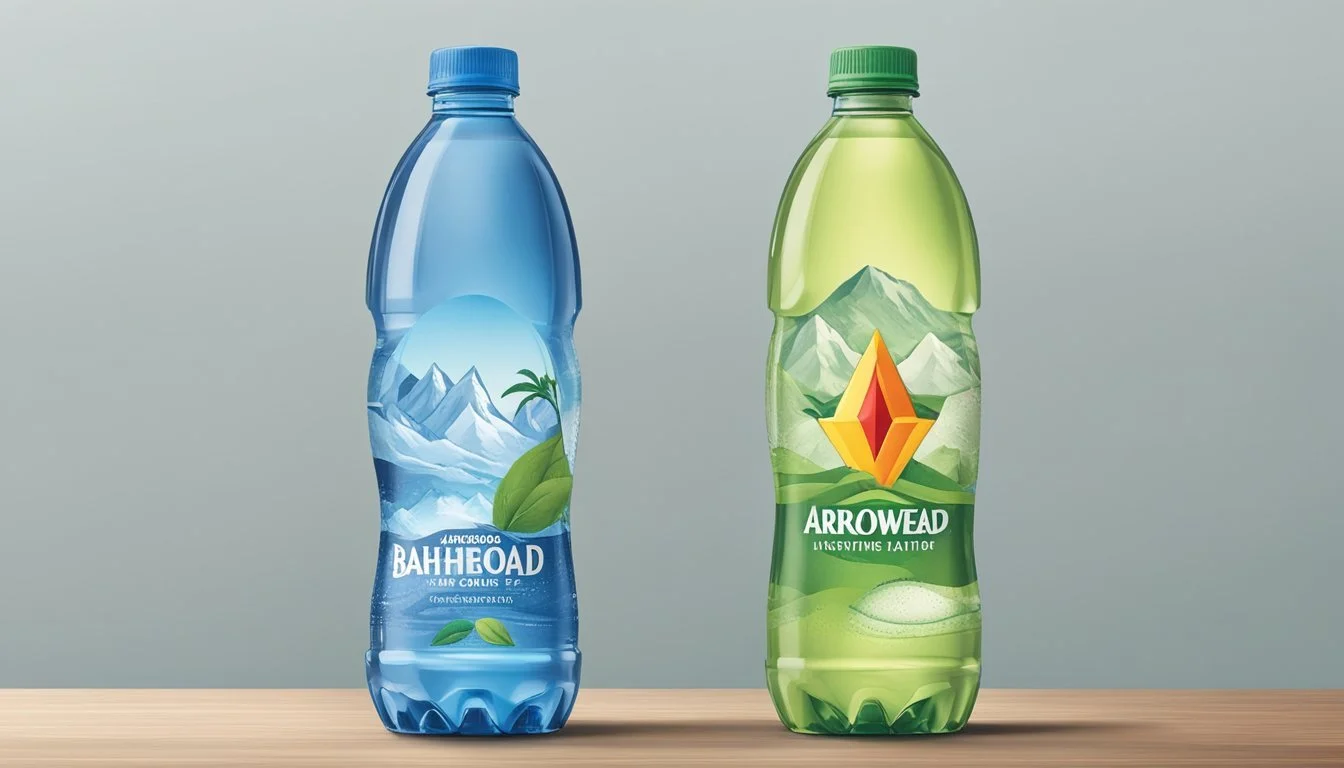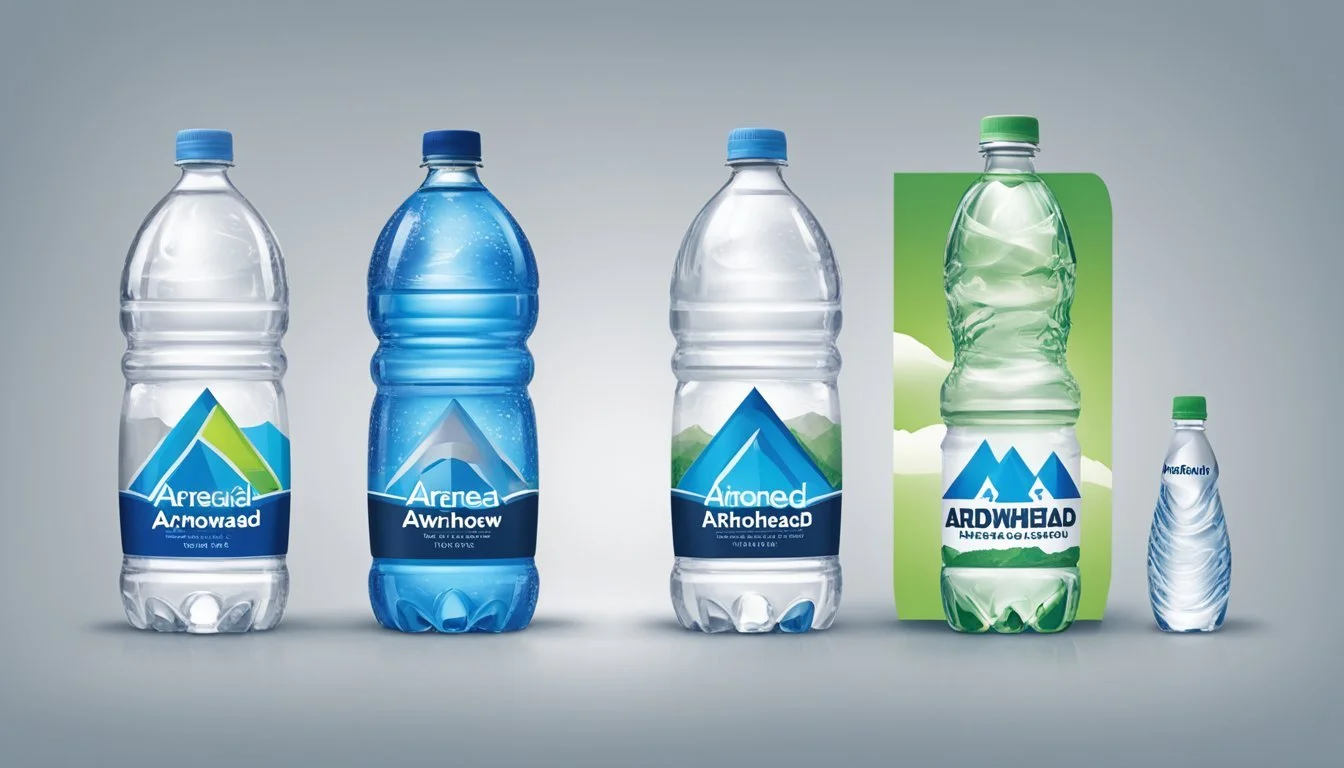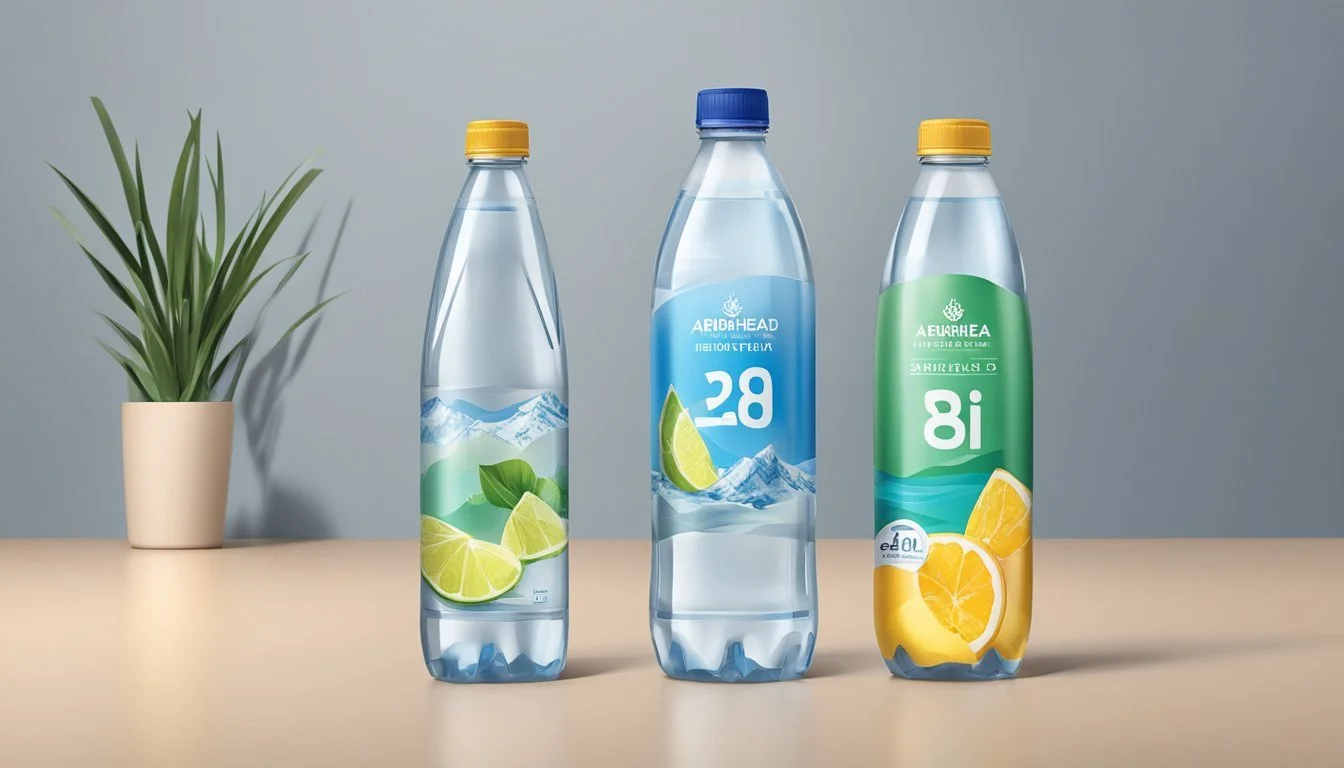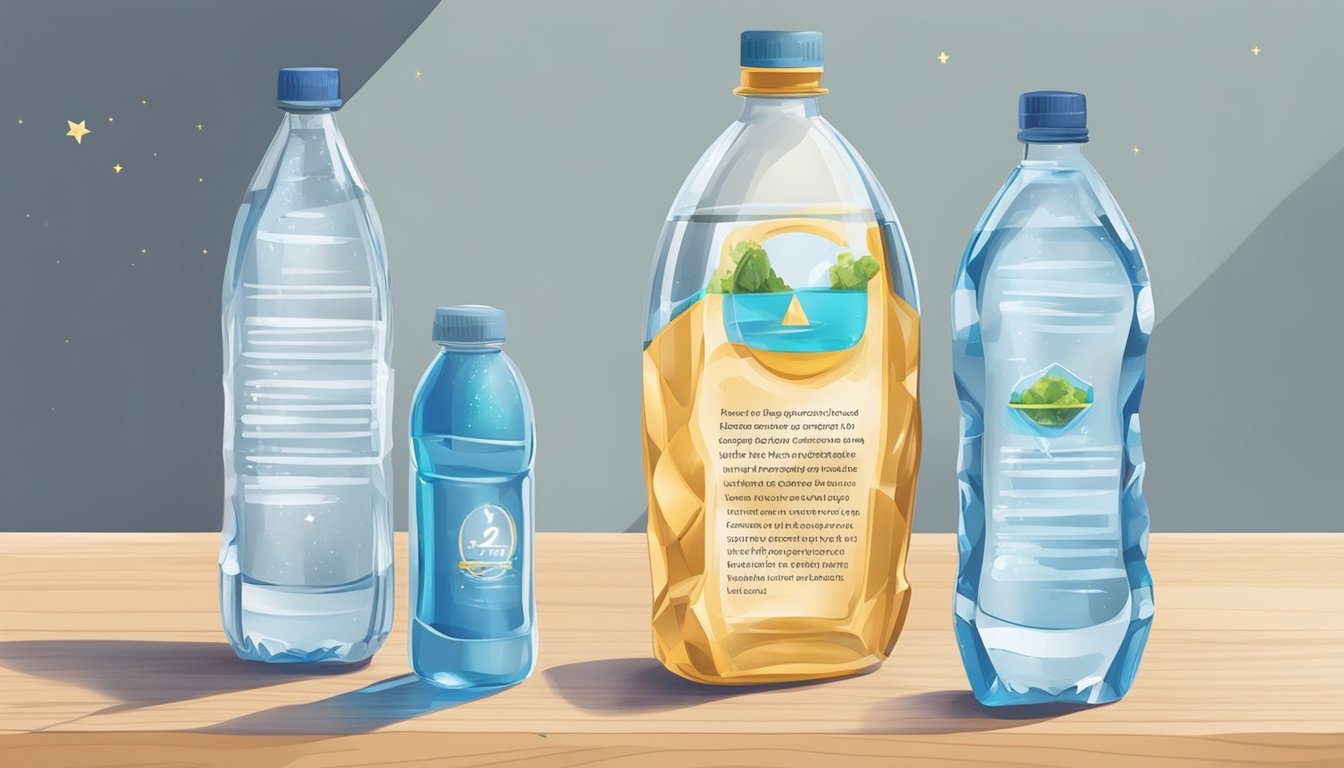Arrowhead vs. Bai Bottled Water
A Comparison Guide
In the world of bottled water, consumers are met with an array of choices, each vying for market share with promises of purity, taste, and health benefits. Two brands often spotted on the shelves are Arrowhead and Bai, both of which offer distinctive approaches to hydration. Arrowhead, a brand with a longstanding history, sources its water from mountain springs and has established itself as a familiar name in the American bottled water market.
Bai, on the other hand, positions itself differently by infusing its water with antioxidants and exotic fruit flavors. This brand targets those who seek an alternative to plain water, aiming to deliver a more flavorful hydration experience. Yet, the question remains: which bottled water is better? It's a debate that touches on multiple aspects, including water source, taste, health benefits, and environmental impact.
Determining which brand comes out on top is not just a matter of personal preference; it also implicates broader considerations that concerned consumers weigh before making their selection. As bottled water consumption continues to rise, the choices made at the checkout line reflect a range of priorities from the purity of the source to the integrity of the brand. The comparison of Arrowhead and Bai thus offers a microcosm of the larger bottled water industry and the values it triggers among consumers.
History and Origins of Bottled Water Brands
The legacy of bottled water brands often reflects their unique geographic origins and the vision of their founders. Arrowhead and Bai, though different in their timelines and sources, both have rich histories that constitute their brand identity today.
Arrowhead's Beginnings
Arrowhead's foundations stretch back to the late 19th century, originating from the Arrowhead Springs in California. The brand, established in 1894, was named after the naturally occurring arrowhead-shaped rock formation on a mountainside in the San Bernardino Mountains. The water from these springs was initially sought after for its purported health benefits and was a part of the early American bottled water industry. Arrowhead emphasizes its lineage by highlighting the tradition of bottling from 13 different springs across the Western United States, thus maintaining a legacy of sourcing from natural springs.
Bai's Emergence
In stark contrast, Bai's emergence in the bottled water market came about in the 21st century, founded in 2009. Unlike Arrowhead, Bai originated as a brand focused on infusing water with fruit flavors while keeping health consciousness in mind. The Bai brand quickly became known for its antioxidant-infused drinks, which offer an alternative to the traditional bottled water experience. Their products are not just about hydration but also about providing a flavorful, low-calorie beverage option. Bai doesn't assert a historical source of water like Arrowhead's spring sources; instead, it positions itself as an innovative brand in the beverage industry.
Water Quality and Source Comparison
When evaluating bottled water brands like Arrowhead Mountain Spring Water and Bai Antioxidant Water, it is imperative to consider the quality of the water and the source from where it is derived.
Arrowhead Mountain Spring Water
Arrowhead Mountain Spring Water sources its water from multiple mountain springs located across the western United States, including locations in California, Colorado, and Canada. This brand is known for using natural spring water, which often provides a different mineral composition compared to purified or tap water. The quality of Arrowhead's water reflects the natural filtration it undergoes through mountain aquifers, which typically imbues it with a unique mineral content that can affect taste and purity.
Bai Antioxidant Water
Bai Antioxidant Water is distinguished by its enhancement with antioxidants, specifically selenium, and electrolytes for added benefits. This water is not sourced from natural springs but rather undergoes a purification process to remove impurities. The quality control for Bai Antioxidant Water focuses on maintaining a consistent composition, which includes a pH balance that is intended to support hydration. Bai adds natural flavors and ingredients to its water, potentially altering the taste profile compared to traditional spring waters.
Taste Profile Analysis
In assessing Arrowhead and Bai, the analysis focuses on flavor diversity and consumer preferences, crucial factors determining their ranking in the bottled water market.
Flavor Diversity
Arrowhead sources its water from mountain springs and traditionally offers a straightforward, clean taste that is reflective of its source. There's minimal variation in flavor profile, with the main product being plain spring water. Arrowhead does not feature a wide range of flavored water options, which limits its appeal to those seeking more than just hydration.
Bai, contrasting Arrowhead, steers towards a more diverse range of flavors. They infuse their water with antioxidants and flavors derived from superfruits like Brasilia Blueberry, Costa Rica Clementine, and Kula Watermelon, providing a variety of choices for consumers seeking flavor along with hydration. Their product portfolio indicates a clear commitment to delivering an experience beyond the traditional water taste.
Consumer Preferences
Consumer reviews show a split in preferences, primarily influenced by individual desires for plain versus flavored water. Some consumers prefer the natural taste of water without additional flavors, which would likely lead them to favor Arrowhead's pure spring water. Others, who opt for a more enhanced drinking experience, lean towards Bai's exotic fruit flavors as the best bottled water option for their palate.
It should be noted, however, that flavor enhancement in Bai's water may not align with consumers seeking the natural purity associated with traditional bottled water. This often makes direct comparison based on taste subjective, as both brands cater to distinctly different taste desires.
Health and Hydration Benefits
When examining Arrowhead and Bai bottled waters, it's crucial to consider their contribution to health and hydration. Factors such as electrolyte content, and nutrition and calorie considerations play a pivotal role in determining their effectiveness in meeting the body's hydration needs.
Electrolyte Content
Arrowhead is primarily known as a natural spring water. Typically, spring water can contain naturally occurring electrolytes, such as calcium, potassium, and magnesium, which are beneficial for rehydration. These electrolytes are essential for maintaining hydration as they help regulate body fluids.
Bai water, on the other hand, is not known for its electrolyte content. However, Bai beverages feature added antioxidants and minimal sugar, and their Bai Antioxidant Water product includes added electrolytes. The advantage lies with the added selenium, a mineral with antioxidant properties.
Nutrition and Calories
Arrowhead: As a natural water brand, Arrowhead's bottled water contains no calories and is free from sugars, artificial flavors, and colors. The defining factor for this brand is the inherent minerals picked up during the water's journey through aquifers.
Bai: Bai's line of flavored water products boasts low-calorie counts, typically with only 10 calories per bottle, and just 1 gram of sugar which is derived from natural sources. Bai waters are infused with flavors and sweeteners from natural sources and are also gluten-free, leaning towards a healthier profile with nutritional benefits stemming from the antioxidants extracted from the coffee fruit and tea.
Both brands offer options conducive to maintaining good health and hydration, with differing approaches catered to individual preferences and nutritional needs. Arrowhead prioritizes natural mineral content for hydration, while Bai provides a low-calorie, antioxidant-infused alternative.
Environmental and Ethical Considerations
In assessing Arrowhead and Bai bottled water brands, it is pertinent to consider their effects on ecosystems and the sustainability of their packaging solutions.
Ecosystem Impact
Arrowhead has faced controversy over its water sourcing practices, specifically the extraction of water from the San Bernardino Mountains which has prompted public debate on the ecological effects. Concerns have been raised about the potential depletion of natural water resources and the disruption of local ecosystems. It is important to scrutinize the long-term sustainability of such sourcing methods, especially in areas prone to drought or ecological sensitivity.
Bottles and Sustainability
Both Arrowhead and Bai utilize plastic bottles for their products, which has implications for environmental sustainability. The production and disposal of these bottles contribute to environmental pollution and the exhaustion of resources.
Material Composition: Plastic bottles are often made with polyethylene terephthalate (PET), which is considered safer and more recyclable than some other plastics. However, the presence of bisphenol A (BPA), a chemical used in the manufacture of certain plastics, has raised health concerns, although it is not typically found in PET bottles.
Recyclability: The brands strive to use bottles that are 100% recyclable, signaling a commitment to mitigate some of the environmental impacts. However, actual recycling rates depend heavily on consumer behavior and local recycling facilities.
Biodegradability: Neither brand offers biodegradable bottles, which means the products can persist in the environment for hundreds of years if not properly recycled.
It is essential for consumers to acknowledge the environmental footprint associated with bottled water and consider responsible use and disposal practices to minimize detrimental effects on the planet.
Product Range and Accessibility
In the battle of bottled waters between Arrowhead and Bai, consumers seek to understand the variety each brand offers and how easily they can be purchased.
Variety of Water Types
Arrowhead provides a range of water products, primarily focusing on still water sourced from mountain springs. While their core product is still water, Arrowhead has expanded its offerings to include sparkling waters in various flavors to cater to different consumer preferences.
Bai, on the other hand, is known for its enhanced waters with added antioxidants. Bai's lineup is less about the traditional types of water and more focused on waters with a hint of flavor, often infused with fruit essences. They do not offer standard purified water options, sticking to their niche of flavored and nutrient-infused water.
Availability in Grocery Stores
When it comes to accessibility and presence in grocery stores, Arrowhead holds strong availability, being a well-recognized brand with mass distribution. Customers can find Arrowhead products in a variety of grocery stores, both large and small, across the United States, particularly in the western regions where it sources its water.
Bai waters are also available in grocery stores nationwide, though their presence is not as extensive as some of the traditional bottled water brands. Given their specialized product line, Bai may be found in the specialty beverage aisles or with health-focused products. However, they are commonly present in large retail chains and can be accessed in most urban shopping areas.
Brand Practices and Image
Arrowhead and Bai have both developed distinct brand practices and appeal, leveraging their unique marketing strategies to shape their brand image. They utilize a variety of platforms to connect with their consumers, creating an image that resonates with their target market.
Marketing Strategies
Arrowhead employs traditional marketing avenues such as TV commercials and print advertisements to portray its image as a brand that provides naturally-sourced mountain spring water. It emphasizes on the natural origin of its water, with visuals of mountain spring sources to cultivate a pure and wholesome brand image.
Bai, on the other hand, adopts a more modern marketing approach, utilizing social media and digital campaigns to reach a health-conscious audience. They often highlight the low-calorie aspect of their flavored water products. Bai also engages with consumers through email, sending newsletters and offers to build a loyal customer base.
Consumer Appeal
Both brands have crafted an image that appeals to particular consumer bases.
Arrowhead: Its image as a brand offering water from mountain springs tends to appeal to those favoring traditional bottled water with the supposed benefits of natural sourcing.
Bai: Bai's appeal lies in its innovative approach, offering antioxidant-infused beverages. The brand capitalizes on the current market trend that favors health-oriented products with added benefits, beyond simple hydration.
In conclusion, the choice between Arrowhead and Bai's bottled water brands may boil down to consumer preference for traditional, natural spring sources versus flavored, antioxidant-infused options with health benefits. Each brand’s marketing strategy and the image are carefully aligned with its product offerings and target audience, creating a unique place for both in the competitive bottled water market.
Comparative Pricing and Value
When choosing between Arrowhead and Bai bottled waters, consumers weigh the cost against the perceived value. Each brand positions itself differently in terms of pricing and market segment.
Cost per Bottle
Arrowhead typically offers a lower price point, largely due to its mass-market production and distribution. Prices fluctuate based on the retailer, region, and bottle size, but on average, Arrowhead costs approximately $1.00 to $1.50 per bottle. In contrast, Bai water, often infused with flavors and positioned as a premium beverage, can cost anywhere from $1.99 to $2.49 per bottle.
Given that Bai incorporates additional flavoring elements and markets itself as an enhanced water product, its higher cost per bottle is an important factor for budget-conscious customers.
Premium vs. Budget Considerations
Arrowhead, as a budget-friendly option, offers straightforward hydration without additional enhancements. It suits consumers looking for value for money and those who prioritize straightforward, pure water.
On the other hand, Bai positions itself as a premium product. While it might be seen as pricier, it caters to a market segment looking for the best water experience with added flavor benefits, which could justify its higher cost.
Buyers must consider whether the enhanced taste and premium branding associated with Bai align with their value perception when evaluating its cost compared to Arrowhead's more economical pricing.
Scientific and Expert Opinions
In assessing the quality of Arrowhead and Bai bottled waters, scientific evaluation of their filtration process and analysis of pH levels and potential contaminants is essential.
Filtration Process
Arrowhead water undergoes a multi-step filtration process designed to ensure purity, typically including carbon filtration, micron filtration, and ultraviolet exposure. This systematic approach is intended to meet or exceed the standards set by the Environmental Protection Agency (EPA). On the other hand, Bai water is known for not containing any artificial sweeteners or added sugar, highlighting a production focus aimed at maintaining a natural water profile while providing additional antioxidant benefits.
pH Level and Contaminants
The pH level of bottled water can greatly influence taste and potentially health benefits, with a neutral pH level of 7 being ideal for pure water. Companies like Arrowhead aim to achieve a pH balance that closely mimics natural spring water, which may involve slight mineralization for an optimal pH. The EPA monitors bottled water for regulated contaminants, including certain chemicals and pathogens. Bai's nutritional highlight is its minimal sugar content and calorie count, but information on its specific pH level is less commonly advertised or scrutinized in comparisons. Both brands, however, are subject to rigorous testing to ensure that contaminants are kept to levels deemed safe by health and environmental authorities.
User Reviews and Testimonials
To understand the consumer preferences between Arrowhead and Bai bottled water, user reviews, and testimonials offer direct insights into the user experience. They provide a practical evaluation of taste, quality, and overall satisfaction.
Online Consumer Reviews
When browsing through online consumer reviews, patterns emerge. Arrowhead often garners mixed responses. Some consumers appreciate its affordability and easy availability, while others are critical, finding the taste to be uninspiring. There is a recognition that Arrowhead sources its water from mountain springs, but not all reviews reflect a positive reception to the taste this yields.
On the other hand, Bai receives praise for its unique flavor profile, derived from the coffee fruit ingredient. Reviews frequently highlight the brand's low-calorie count and the infusion of antioxidants. Although Bai is not traditionally known just for water, but rather antioxidant infusions, fans of Bai's flavored waters express satisfaction with their diverse taste options.
Expert Endorsements
Filtering through expert endorsements, one might encounter a different perspective. A water sommelier may focus more on the taste profile and mineral content of the water. Bai's innovative approach, introducing antioxidants and flavor, may catch the attention of experts looking for a modern twist on hydration. Bai doesn't typically receive direct comparison with traditional bottled waters due to its niche market segment focused on flavored waters.
Arrowhead, being a longstanding brand, might come under scrutiny for its mass production processes, yet some experts might endorse it for its consistency and wide accessibility. However, detailed consumer feedback from these experts is less common, as formal taste tests and assessments are their typical avenues of review.
No direct quotes or individual testimonials were used to compile this overview to ensure neutrality and respect for privacy.
Regulations and Certifications
Bottled water brands are subject to stringent quality controls set by regulatory bodies to ensure consumer safety. Arrowhead and Bai waters comply with standards set by the Environmental Protection Agency (EPA) and the Food and Drug Administration (FDA), as well as adhering to various international certifications.
EPA and FDA Standards
The EPA establishes guidelines for tap water, while the FDA regulates bottled water. Both organizations ensure that the water provided to consumers meets strict safety standards to prevent contamination. Bai and Arrowhead products must comply with these federal regulations to be marketed and distributed.
EPA: Monitors and sets standards for contaminants in public water systems.
FDA: Regulates bottled water as a food product, ensuring it meets the Standard of Identity, Quality, and Good Manufacturing Practices.
International Certifications
In addition to federal regulations, bottled water brands may seek international certifications to validate their adherence to global standards. Certifications can include:
ISO (International Organization for Standardization)
NSF International (formerly the National Sanitation Foundation)
IBWA (International Bottled Water Association)
These certifications assure consumers that the product they're purchasing has been evaluated by an independent third party and meets international benchmarks for safety and quality. While certifications may vary, both Arrowhead and Bai seek to maintain high standards to ensure customer trust and product reliability.
Bottom Line: Arrowhead vs. Bai
Choosing between Arrowhead and Bai bottled water depends on consumer priorities such as taste, source, and ingredient preferences. Arrowhead is known for sourcing its water from mountain springs across the western U.S. and Canada, offering consumers a straightforward option of spring water.
Arrowhead:
Source: Mountain springs
Profile: Plain spring water with a neutral taste
In contrast, Bai offers antioxidant-infused waters that contain flavors and added ingredients, which may appeal to those seeking a taste that differs from plain water.
Bai:
Source: Varies, with added flavors and antioxidants
Profile: Flavor-infused water focusing on a blend of taste and added nutrients
A key consideration when choosing between the two is the additional elements present in Bai's products, such as natural sweeteners, that some consumers might prefer for flavor enhancement.
Ingredients Comparison:
Brand Arrowhead Bai Water Type Mountain Spring Water Antioxidant-infused Water Added Elements None Sweeteners, Flavors, Antioxidants
If purity is the main concern, Arrowhead may be the right choice due to its source and lack of additional ingredients. However, if one is looking for functional benefits beyond hydration, including flavor variety and added antioxidants, then Bai could be the preferable option. It's essential for consumers to consider their personal preference for taste, water source, and ingredient list when making their choice.

